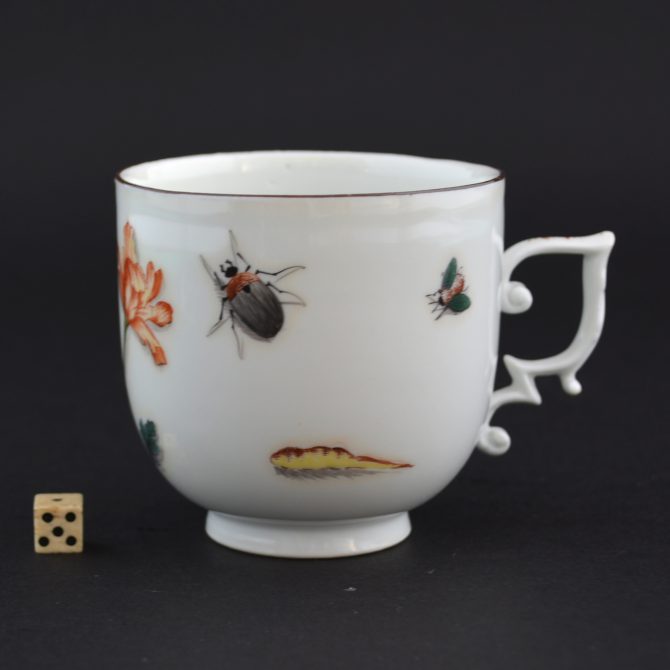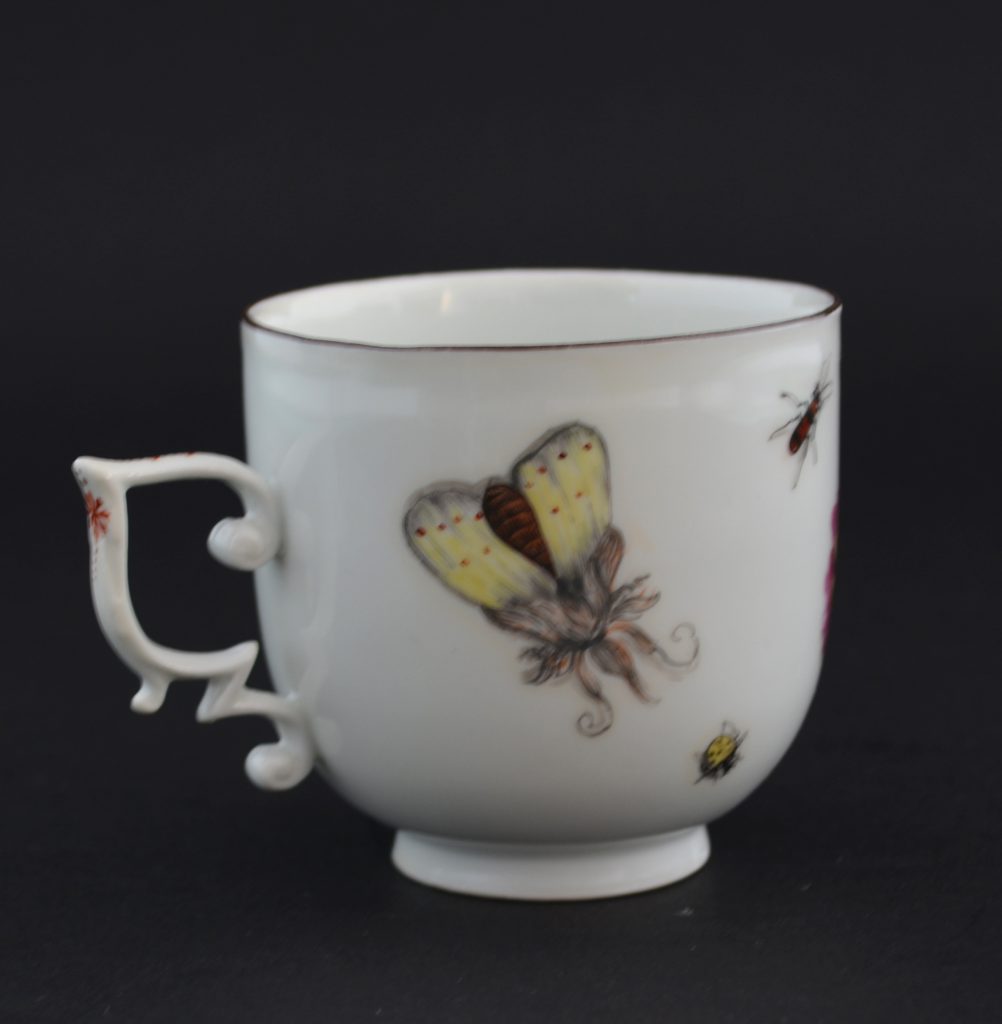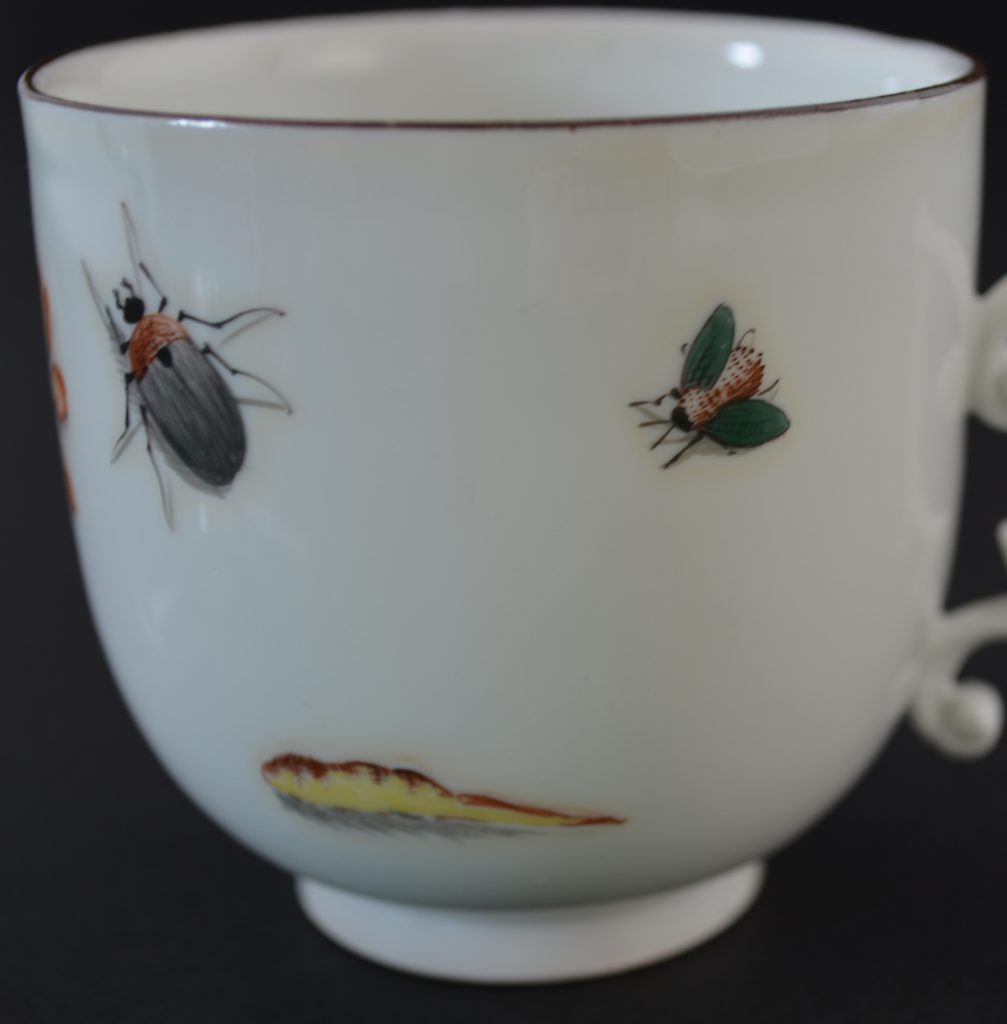
MEISSEN c.1740 – 1745
An 18th Century Meissen Porcelain Coffee Cup c.1740-1745. Painted in the Style of Johann Gottfried Klinger (1711-1781) with Shaded Holzschnittblumen (Woodcut Flowers) and Insects. The Base with Crossed Sword Marks in Underglaze Blue for the Meissen Porcelain Factory.
SOLD
- Condition
- N/A
- Size
- Height : 7 cm (2 3/4 inches)
- Provenance
- A Private English Collection, Mostly Consisting of Meissen Porcelain
- Stock number
- 24452
- References
- Examples of this type of decoration include a Meissen teapot and cover see : A Distinguished Collection of Early Meissen Porcelain, Christie`s London, July 2nd 2002, lot 129. For a Meissen teapot and a Meissen tea canister and cover with this type of decoration see : Fine European Ceramics, Including Porcelain from the Von Klemperer Collection, Bonham`s London, 8th December 2010, lots 87 and 88. A Meissen jug and and cover sold by R&G McPherson Antiques number 23869.
Information
Designs like the present example were inspired by engravings of insects shown with other things taken from the natural world, from fields and hedgerows, such as insects, fruit, nuts, birds and flowers. The designs of Georg Hoefnagel (1542-1600) engraved by Jacob Hoefnagel (1575-1640) were copied by the Du Paquier factory in Vienna but the individual insects were avoided. Individual insects were used to decorated porcelain at the Carlo Ginori factory at Doccia in the 1740`s.
The carefully painted flowers appear almost as if they were pressed flowers, which is not entirely surprising considering they were taken from contemporary copper-plate engravings. The term used to describe this type of flower painting is Holzschnittblumen, 'Woodcut Flowers'. This style is the most botanically correct of the Meissen flower painting styles and dates to c.1740. From about 1745 Deutsche Blumen 'German flowers' became popular, it was a less linear style but still careful in its execution. Both of these ways of painting flowers contrast with the more loosely painted Naturliche Blumen, 'Natural Flowers' favoured slightly later in about 1750.




